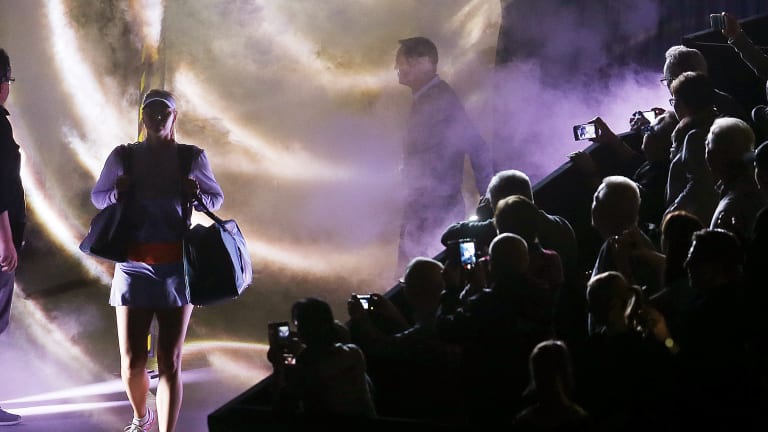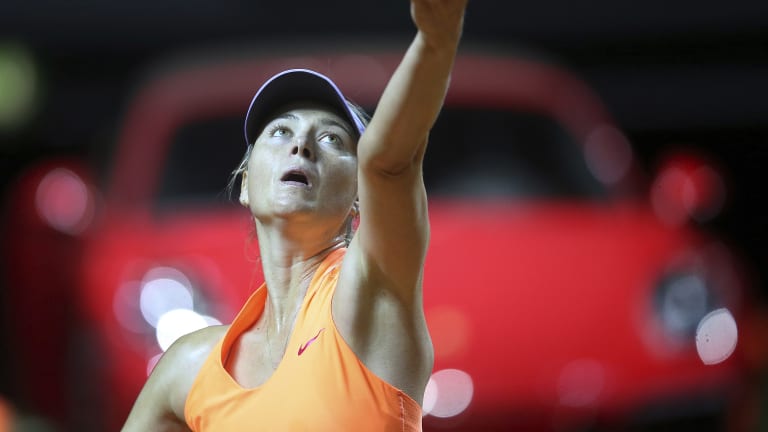The ramrod-straight strut into the arena. The clenched fist as she waited to return serve. The clean ground-stroke winners to the corners. The high-pitched grunt that accompanied each swing. The pre-serve stare down. The unrelenting focus punctuated by the wild double faults. Maria Sharapova has brought them all back, perfectly intact, to Stuttgart this week.
This is the first time we’ve seen Sharapova on a tennis court in 15 months, and the first time we’ve seen her play as a 30-year-old. But in her two victories on Wednesday and Thursday, she could have been 25, or 20 or 15. Her playing style, and her rigid adherence to her rituals between points, has never altered in her decade and a half on tour. As she has shown again this week, the wisdom of that approach is apparent in her results.
Sharapova has hit a rusty ground stroke or two in Stuttgart, and she has looked half a step slower than normal on the red clay. But that hasn’t kept her from beating two quality players, Roberta Vinci and Ekaterina Makarova, in straight sets to reach the quarterfinals. Judging by her joyous post-match reactions, Sharapova hasn’t lost any of her competitive drive or desire. Did anyone think she would?
Sharapova is happy to be back in the tennis world again, but is the tennis world happy to have her? She has won Stuttgart three times, but the crowd’s reaction to her return on Wednesday was lukewarm. The response from her fellow players has been about 50 degrees cooler. The consensus among those asked is that Sharapova shouldn’t be helped into main draws at big events with wild cards. Eugenie Bouchard, who once followed in Sharapova’s career footsteps, has gone so far as to say she shouldn’t be allowed to play at all.


